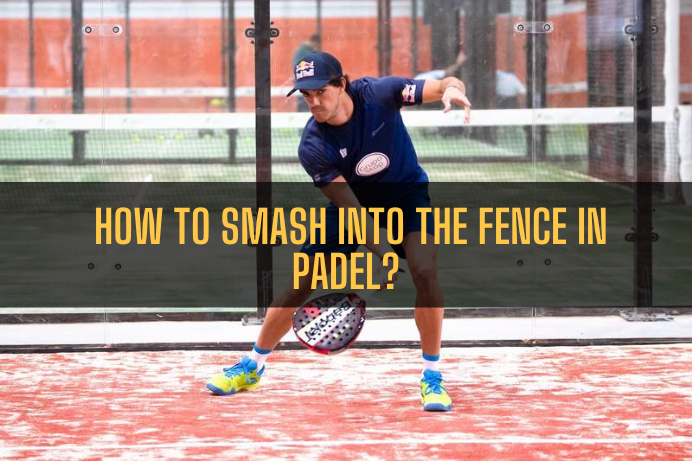I’ve noticed more players playing the Smash to the Fence in World Padel Tour competitions lately. It is a highly effective approach to score a point quickly. I didn’t realize that because it is played slower and with more control than power smashes, and it is a beautiful attacking smash to master initially.
To quickly learn this excellent attacking shot that will enhance all of your smashes, you should practice the smash to the Fence.
Padel’s smash to the Fence is the best-executed crosscourt to give you a larger target to shoot for. Your crosscourt smash to the Fence will be simpler to execute the broader and nearer to the net you can stand. Flat and slice smashes are more successful because the Ball will stay lower after striking the Fence.
So that you can rapidly learn this excellent attacking stroke that will enhance all of your smashes, let’s take a closer look at the components of the smash to the Fence.
Check out the Ball Coming to you.
This implies that to determine whether a smash to the Fence is feasible, you must read the Ball as it approaches you.
A high ball is within your centre of balance; keep that in mind. When playing your smash, you don’t want to be leaning backwards because that will limit your ability to control the shot’s trajectory.
Like the previous example, you should play your smash to the Fence of a slower lob that gives you time to position yourself.
How high should you contact the Ball for a Padel smash to the Fence?
The Ball should be as high as possible when picking the height at which you want to smash it against the barrier to obtain the necessary downward angle.
Remember that any shot you take will be shorter than one you would typically take into a corner. As a result, you must either play significantly softer or use as much angle as possible.
How far should you stand back from the net for the smash to the Fence?
You can get away with using a ball that is a little lower if you can play the ball closer to the net. This is more akin to hitting a volley in the direction of the barrier. You will want the Ball to be high enough to have a downward angle to the Fence, even with a volley to the Fence. Low volleys are ineffective.
The smash to the Fence becomes much riskier if you are far from the net since you once again have a smaller window of opportunity.
How far to the left or right should you stand to do the smash to the Fence?
Which area of the Fence should you hit with your smash?
Your shot will be more successful if the Ball contacts the Fence as close to the door as possible. There is a strong probability that your opponent can move forward and play the Ball before it reaches the Fence if your smash is more profound and you attempt to touch it closer to the glass.
It is difficult for your opponent to reach the Ball before it interacts with the Fence when you play at a tighter angle such that the ball contacts the barrier closer to the entrance.
After playing the Smash to the Fence, which court portion should you cover?
Based on the chance of how the Ball bounces off the barrier, your opponent has just two options when you play your crosscourt smash to the Fence.
The Ball can be played straight or slightly crosscourt by your opponent. Responding to the irregular bounce off the barrier while maintaining control of a tight, attacking crosscourt shot will be challenging.
Because of this, moving across the court to cover the middle of the court will be your best move after playing your smash to the Fence. As a result, your partner will be able to quickly return any balls that come down the line on their side of the court, and you will be set up for any balls that come vaguely up the middle or crosscourt, even if the Ball touches your partner’s side of the court.
Spin’s Impact on Your Smash Against the Fence
According to some trainers, if you smash with a slice to the Fence instead of playing your smash flat or with topspin, the Ball will tend to stay low.
The idea behind this is that some areas of the Fence mimic a glass wall regarding how the Ball responds.
Nevertheless, the majority of the time, how the Ball falls off the Fence depends on chance, depending on which area of the Fence wire the ball strikes.
Trying to add slice spin to a smash to the Fence merely complicates the shot. Therefore, I’d only do that once my skill level is significantly greater than it is right now.
The Smash to the Fence is a powerful padel shot that will help you score several points even when played flat. As a social player, trying to add spin would only raise my likelihood of making an unintentional mistake.
How should you play a Lob to stop your rival from smashing into the Fence?
You’ll give your opponent a chance to play a smash to the Fence against you if you play your lob toward the corner without getting enough depth.
Aiming your lob farther toward the court’s middle will help you prevent this. In this manner, your adversary will need more of a crosscourt angle to play their forceful smash to the Fence.







